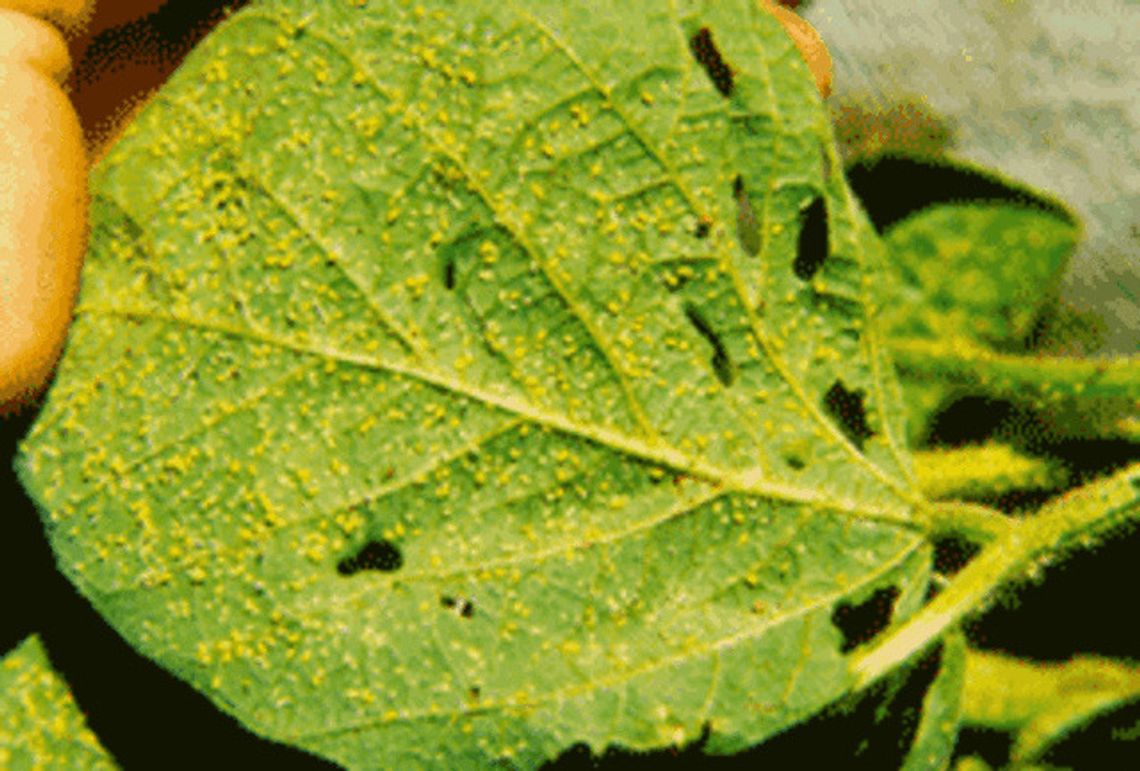The soybean aphid is a new soybean pest in the United States. A native tof Asia, aphids have appeared over the upper Midwest and into Canada.
Soybean aphids and potato leaf hoppers can make identification for the pests difficult. The differences between the two pests are that potato leaf hoppers are triangle- shaped and will move or jump away when disturbed, while the aphids are light green, have a pear-shaped body, and do not move when disturbed. Soybean aphids feed on the plant sap, causing plant deterioration and low harvest yields.
In Nebraska, 2014 had a widespread outbreak of soybean aphids, but in 2024, they reappeared in northeast Nebraska. The exact reason for outbreaks is unknown. There are several factors that contribute to the outbreaks such as their populations fluctuate yearly, and they migrate from Michigan, Minnesota, and Wisconsin, where they overwinter.
It is hard to predict if soybean aphids are going to be a problem for this crop year.
Actively scouting soybean fields in July and August will help decide if it’s necessary for pest management; this is usually when the plant reaches the threshold for late vegetative through the R5 stage.
The R5 stage is when the seeds within the pods grow rapidly. This stage is critical in pest control for soybean aphids with the treatment of insecticide.
Currently, the recommended economic threshold for late vegetative through R5 stage soybeans is 250 aphids per plant with an eighty percent plant infestation and aphids’ population increasing.
The economic threshold level is the point of managing pests has become economically justifiable. At this point, there is five to seven days to apply a treatment plan. This treatment plan needs to be implemented before populations reach economically damaging levels.
If the aphid populations do not increase during the fiveto- seven-day period, treatment could be delayed or eliminated.
Several scouting visits may be necessary to figure out if aphid population is increasing. There are some favorable factors in which aphid populations increase, such as cool temperatures, plant stress during drought conditions, and decrease of lady beetles and other natural enemies.
Two scouting methods are conventional and speed scouting: conventional method is the 250 aphids per plant, 80 percent of plant infestation and population increasing; speed scouting method is a tool available as a web-accessible Nebraska Extension Circular.
This tool will make recommendations according to the information entered on spreadsheet.
Aphids feed on the underside of soybean leaves. As the plant grows, leaves will spread out, overlapping to create a canopy within the field. A good insecticide that can provide coverage into the canopy is necessary for maximum control of aphids.
When spraying soybeans, which are flowering communicators with the local beekeepers, following the insecticide label precautions will help keep honeybee kills to a minimum. If honeybees are a concern, spray late in the day since most bees have completed foraging and are back in their hives.
Soybean aphid management requires crucial information along with scouting fields regularly compiling information for effective pest control decisions.
Additional resources on soybean aphid management are as listed:
• Biology and Economics of Recommendations for Insecticide- Based Management of Soybean Aphid.”
• UNL Entomology website and CropWatch articles.
• Scouting tool is freely available as a web-accessible Nebraska Extension Circular EC1582 Aphid Speed Scout to be used in the field on mobile devices (e.g. smartphone, computer,



